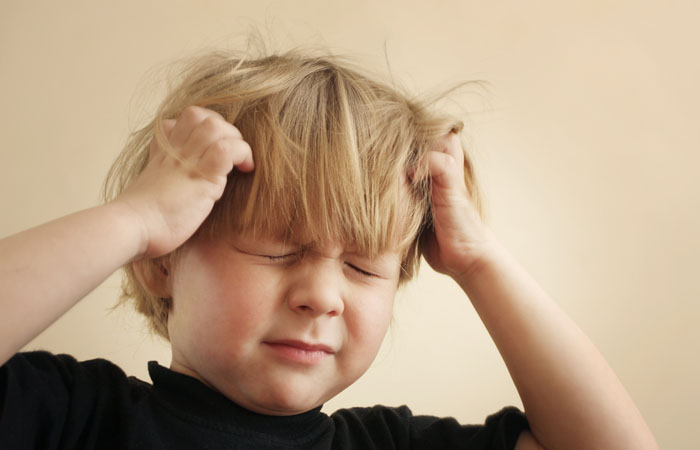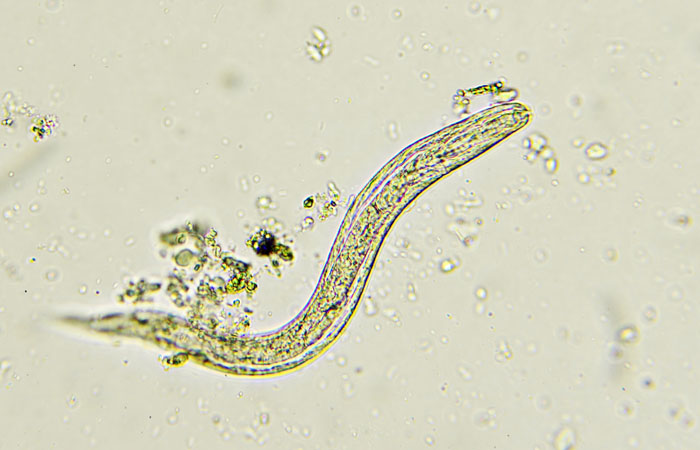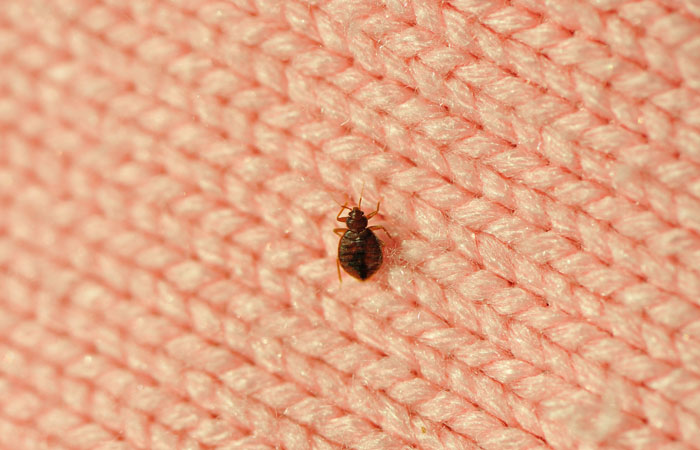Biting back
In Conditions
Follow this topic
Bookmark
Record learning outcomes
As families enjoy the school holidays and a break from routine, now is the time for pharmacies to prepare for the influx of parasite infections that go hand in hand with the start of the school year
Failing to prepare is preparing to fail and pharmacy teams can be on hand to help parents get battle-ready against an array of parasites ahead of the school year starting again. Head lice are most common in children aged four to 11, with the peak age being seven to eight years, and most children will be affected at some point. Head lice infection is more common in children with long hair and those with more siblings.

“[Infections] at the start of term are common and it’s simply because children are in close proximity again on a daily basis,” says head lice expert Joanna Ibarra, founder of Community Hygiene Concern, which launched the National Bug Busting Day campaigns.
Elizabeth Brunton, deputy director at Insect Research and Development, says it’s important to remember infections can happen at any time. “It is often seen as a school problem and therefore parents tend not to worry so much about it until the new academic year. However, head lice can be picked up at any time from anyone – a family member, visiting cousins, friends, Brownies and Cubs, et cetera.”
Last year NHS England published guidance advising GPs to curb prescribing of over-the-counter (OTC) treatments for head lice, threadworms and ringworm. This has meant more parents being directed to their local pharmacy for advice and to buy treatments, where necessary, making it vital for pharmacy staff to have up-to-date knowledge of the latest guidelines on treatment for parasites.
Staying ahead
In order to advise customers on detecting and effectively treating lice, pharmacy teams need to understand their life cycle. These parasites feed on blood from the scalp and infection varies from a few lice to over 100 in severe cases. Head lice have three stages of development, as seen below.
A louse life cycle

Lice can only spread via head-to-head contact – they can’t fly, jump or swim. They are unlikely to spread by sharing hats, pillows or combs. Once removed from a human head they only live one to two days.
Lice can only spread via head-to-head contact – they can’t fly, jump or swim
Spotting the signs
Itching is not a reliable sign of a head lice infection, as this often won’t develop for several weeks and some people never experience it. There are not normally any other signs of infection, except occasionally a rash on the back of neck and behind ears if the person is sensitive to lice.
The only sure way to diagnose head lice is to look for them using a detection comb. A live louse must be found to confirm an active head lice infection.
Detection combing can be done on wet or dry hair, but wet combing is more reliable as lice are immobile when wet and therefore easier to spot and remove.
It is important not to confuse detection combs for louse detection and removal with those for removing nits, says Joanna. A louse detection and removal comb should be made of plastic with a gap of 0.20 – 0.30mm between teeth to trap lice and nymphs. To remove eggs, a finer comb with a gap of 0.09 – 0.19mm between teeth is required.
Wet detection combing
- Wash hair with ordinary shampoo
- Apply plenty of conditioner (any type)
- Use a wide-toothed comb to detangle hair
- Use the detection and removal comb
- Slot teeth of detection comb into hair at roots so it touches the scalp
- Draw it through to tips of hair, maintaining contact with scalp for as long as possible
- Check comb for lice after every stroke and remove any by wiping or rinsing comb
- Work through hair section by section
- Rinse off conditioner
- Repeat the combing to check for any missed lice.
Dry detection combing
This is quicker than wet combing, but may not be as effective as lice move quickly when disturbed, unless they are wet.
- Use a wide-toothed comb to detangle hair
- Switch to the louse detection and removal comb
- Comb from scalp to tips of hair, working in small sections
- Look for lice as comb draws through hair. If louse is seen, trap with thumb against comb, then remove.
Regular head checks and detection are essential for effective treatment and to prevent reinfection and the spread of head lice. “Coordinated detection is key to tackling infections, across whole communities,” says Joanna. “It’s important to tell parents about checking for lice regularly, ideally as a whole community – e.g. whole school agree one day on which parents will check children – but if not then at least once a month.” National Bug Busting Days take place on 31 October, 31 January and 15 June each year – see chc.org for information on these days and how they can help.
It’s important to remind adults to check their own heads too, Elizabeth advises. “Regular checks for the at-risk group are important, however many people have not got a clue how to do it, or use the wrong type of comb to check. Often they forget to check themselves and we have certainly seen some heavy [infections] on adults unaware of the fact.”
Treating head lice
NHS guidelines recommend treating everyone in the house who has head lice on the same day to avoid reinfection. Treatment is only needed if live lice are found. Wet combing is recommended as the first method of removal. Other methods such as physical treatments or insecticide should only be used if wet combing has been tried for 17 days without success.
- Wet combing
Customers should be advised to use the wet combing method described above. It should be repeated on days five, nine and 13 and then again on day 17 to ensure head is lice-free.
“It’s important to tell parents the correct comb to use for this and that a metal pin comb is not effective. Give out instructions to parents on how to do the wet comb method properly – we have two videos on our website (chc.org) that customers can watch,” says Joanna.

- Physical treatments
These work by blocking the louse’s airway and the way they pass out water, which kills them. Those licensed for use include dimeticone 4% lotion and spray and dimeticone 92%. Isopropyl myristate and cyclomethicone solution works by dissolving the wax coating on the louse skeleton, leading to dehydration and death. Isopropyl and isopropyl alcohol also work in a physical way.

“While these are effective treatments, they need to be used as instructed and crucially a treatment should be repeated one week after the first treatment as eggs are not always killed,” says Elizabeth.
- Traditional insecticides
Malathion 0.5% liquid is the only chemical insecticide now recommended. It should be applied twice, seven days apart.

- Herbal and essential oil treatments
There are various alternative treatments available, which include tea tree oil, herbal blends and essential oils. However, there is little evidence for their efficacy.
Prevention tips
Preventative steps can help stop infection and “the best way to prevent head lice is with regular checking”, says Elizabeth Brunton, deputy director at Insect Research and Development. In addition:
- Tying back long hair may help
- Encourage schools to take part in school-wide Bug Busting Days
- Remember to check adults’ hair too.
Why treatments fail
A common complaint pharmacy teams may hear is that head lice treatments have not worked. One reason for this is people not following instructions carefully, especially when it comes to not repeating the treatment. Another is not using enough product. “Most people do not achieve adequate coverage, either because the products are not easy to use or else they are trying to be economical,” says Elizabeth.
With wet combing, a reason for failure might be using the wrong comb or not repeating the treatment enough times.
The cost of buying treatments can also be prohibitive for families and there is a danger of infections being left untreated for this reason, explains Joanna. She says: “Check with your Clinical Commissioning Group (CCG) as some are still allowing the free provision of Bug Busting kits to treat head lice via the minor ailments scheme.”
Banish the bugs
Head lice aren’t the only parasitic infection that children – and adults – are vulnerable to. Here’s a round up of the causes, characteristics and treatments of each.
Threadworms

These are the most common parasitic worm in the UK and mainly found in children. It’s thought that up to 40 per cent of children are affected at some time.
These cotton-like worms are 2-12mm long and may be seen in stools or skin around the anus. The most common sign of an infection is intense itching around the bottom, especially at night.
The parasite is passed on via the eggs, which can be picked up around the home and then transferred to the person when eating or touching the mouth.
How to treat:
A single dose of mebendazole is recommended, which may need to be repeated two weeks later if the infection persists. The whole household should be treated, but it’s not suitable for those aged under two or pregnant women – hygiene measures alone are indicated here. If a customer is using mebendazole, they should use hygiene measures for two weeks after treatment to prevent reinfection.
- Wash hands thoroughly after using the toilet, changing nappies and before handling food
- Cut fingernails regularly and avoid biting nails
- Wear underwear at night to ensure they don’t scratch during sleep
- Shower each morning to remove any eggs
- Change bed linen and nightwear daily for several days after treatment and wash it on a hot cycle
- Dust and vacuum bedrooms and bathrooms.
Scabies

This is caused by a tiny mite that burrows into the skin. Around one in 1,000 people develop scabies each month.
The main symptom is intense itching, often on the hands, and then spreads to anywhere that is touched. The mites burrow under the skin and these tunnels appear as fine, dark or silvery lines, usually between the fingers, the inner surface of the wrists and the hands. A blotchy, lumpy red rash is another sign. Scabies is passed on through close skin-skin contact.
How to treat:
Permethrin 5% cream is the recommended first-line treatment and kills the mites. If this can’t be used, malathion aqueous 0.5% is advised. The cream should be applied to the whole body from the chin downwards. Permethrin should be washed off after eight to 12 hours and malathion after 24 hours. A second application is needed a week later.
All household members and close contacts need to be treated too. Bedding, clothing and towels must be washed at high temperature and dried in a hot dryer.
Itching may continue for several weeks after treatment. Crotamiton cream or hydrocortisone cream can help.
Ringworm

This is a fungal skin infection and not actually caused by a parasite.
Ringworm is most common in children and young adults. It can be caught through contact with an infected person or animal, but usually it is caused by dermatophyte infection.
Signs include a patch of rounded, red, inflamed skin, which can be itchy. There may be several patches of affected skin.
How to treat:
Antifungal cream is available over the counter to treat ringworm. There are several to choose from: clotrimazole, miconazole, econazole, ketoconazole and terbinafine. For inflamed skin, it can be combined with a mild steroid cream. For a severe infection, an oral antifungal can be prescribed.
To avoid spreading the infection, customers should not share towels and should wash bedding, towels and clothes frequently.
Bed bugs

These tiny insects can live in furniture, bedding and clothing and tend to bite at night. They are oval shaped, around 2-5mm long and red/brown in colour. Signs of an infection include developing itchy bites, seeing spots of blood on bedding, brown spots on bedding and a sweet almond odour.
How to treat:
Bites can be treated with hydrocortisone cream or antihistamine tablets. Affected bedding should be washed at 60°C. Wrapping the mattress in plastic can prevent insects getting in and will kill any existing bed bugs. To get rid of bed bugs, advise customers to call a pest control company who will use an insecticide to kill them.
